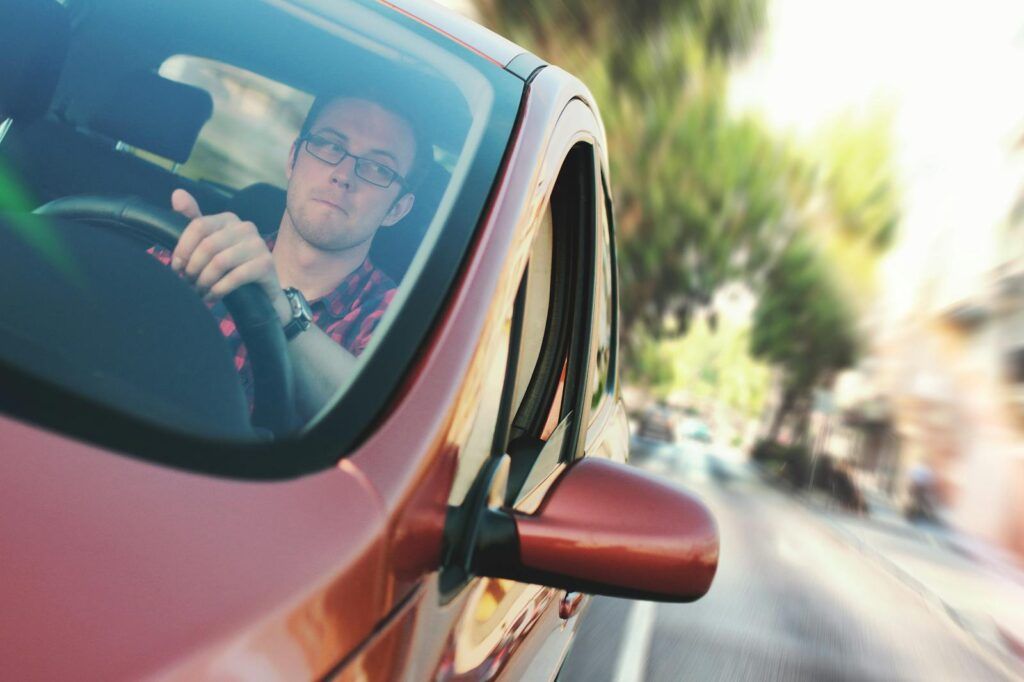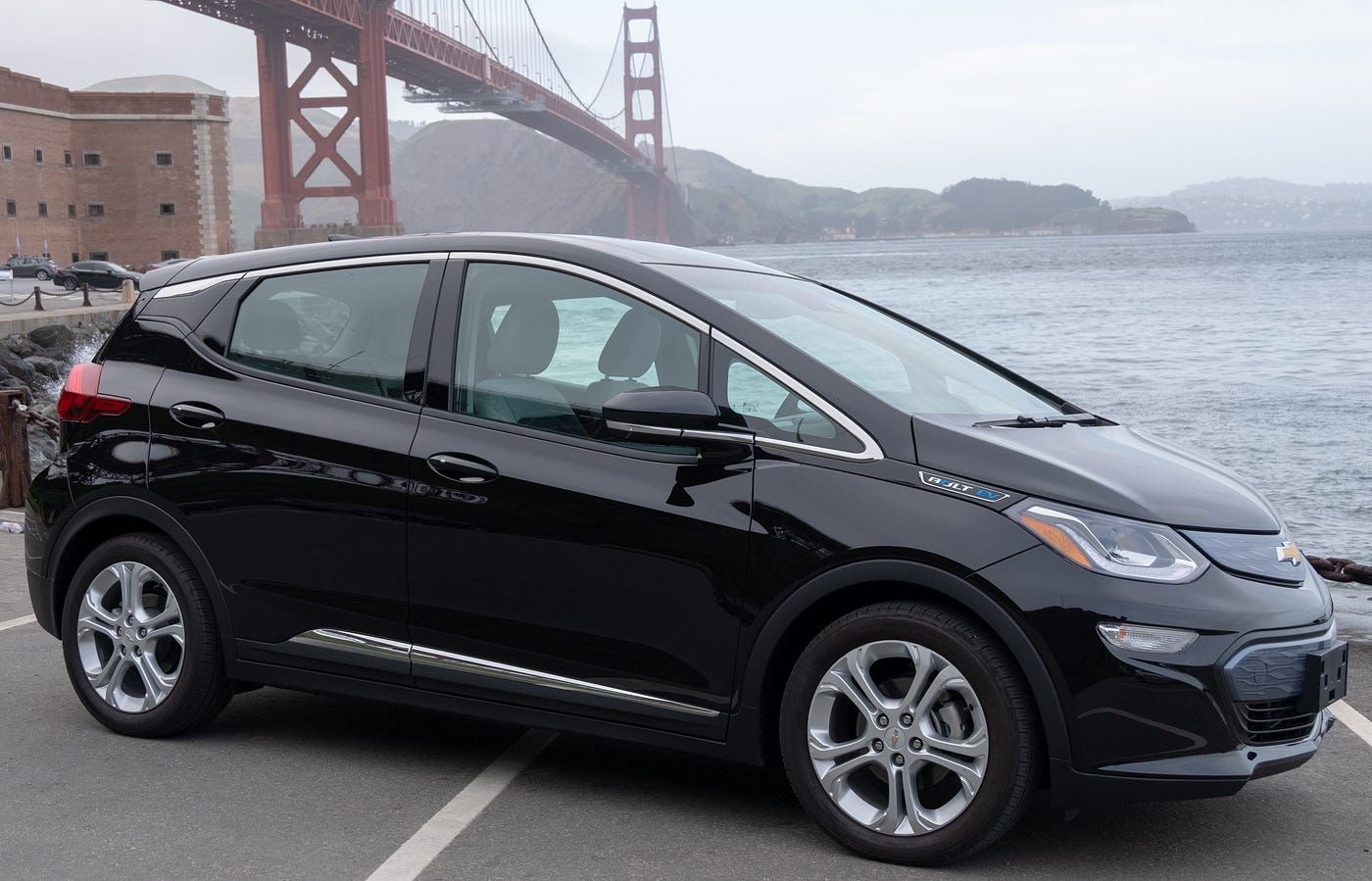
For many drivers, the sight of flashing blue and red lights in the rearview mirror immediately triggers a single, often overwhelming, thought: “Was I speeding?” It’s a natural assumption, as exceeding the speed limit is indeed the most common reason police officers conduct traffic stops across the nation. Tens of thousands of motorists are stopped daily for going too far over the limit, a testament to its prevalence as a traffic violation. However, reducing your risk of a roadside encounter involves more than just keeping an eye on your speedometer. Police officers are trained to identify a wide array of infractions, and many of these have nothing to do with how fast you are driving.
Understanding the full spectrum of reasons why law enforcement might initiate a traffic stop is crucial for every driver. Beyond simply avoiding tickets, this knowledge empowers you to protect your rights, maintain your vehicle properly, and practice safer driving habits overall. While no one is a perfect driver 100 percent of the time, being informed about these non-speeding reasons can significantly reduce your chances of an unexpected stop and the costly tickets that often follow. It’s about being proactive and prepared, turning potential anxiety into confident awareness.
This in-depth guide aims to shed light on some of the most common reasons police pull over drivers when speeding isn’t the issue. We’ll delve into specific violations that are often easily spotted by officers, explaining why they are considered problems and what you can do to avoid them. By grasping these details, you can navigate the roads with greater confidence, understanding not just the letter of the law, but also the practical implications of your driving choices and vehicle maintenance.

1. **Equipment Violations**
Equipment violations stand out as one of the most common reasons for police to pull someone over, and for good reason. From a safety perspective, faulty equipment poses a direct hazard on the road, increasing the risk of accidents for you and other motorists. Officers are keenly aware of this danger and will likely conduct a traffic stop if they observe such issues, prioritizing public safety by addressing potential threats.
What makes these violations particularly easy targets for law enforcement is their visibility. An officer can often spot an equipment violation from a considerable distance, far exceeding the range at which they might accurately gauge your speed. Whether it’s a broken headlight, a malfunctioning taillight, overly tinted windows, a loud exhaust system, or even a broken windshield, these issues are readily apparent and provide probable cause for a stop, making violators easy targets for ticketing fines.
Common examples include driving with a headlight out, a non-working taillight, or overly dark window tint. In some instances, a missing mirror or an excessively loud exhaust system can also draw attention and warrant a stop. These are not merely cosmetic issues; they directly impact visibility, communication with other drivers, and the overall roadworthiness of your vehicle, making their enforcement a clear priority for police officers.
To avoid being pulled over for equipment violations, a routine inspection of your vehicle is highly recommended. Regularly check all your lights – headlights, taillights, brake lights, and turn signals – to ensure they are functioning correctly. Also, be mindful of window tint laws in your state, as these can vary significantly. Simple preventative measures like these can save you from an inconvenient stop and a potentially costly ticket, ensuring your vehicle remains safe and compliant.
Read more about: Consumer Alert: Why 14 States Are Cracking Down on Aftermarket Window Tint and What Drivers Need to Know

2. **Failing To Come To A Complete Stop**
In the absence of heavy traffic, many drivers are prone to performing “rolling stops” at stop signs rather than coming to a full and complete halt. While it might seem like a minor time-saver, this practice is a clear traffic violation that police officers are specifically trained to look for and cite. It’s an easily observable infraction that poses a genuine risk, as failing to stop completely reduces a driver’s ability to spot oncoming traffic or pedestrians.
This type of violation is particularly convenient for officers to enforce. They can simply park their patrol car at a nearby intersection and observe. Oftentimes, they won’t have to wait more than a few minutes before someone rolls through a stop sign without a complete stop. The clear-cut nature of the violation—either you stopped or you didn’t—leaves little room for ambiguity, making it a straightforward reason for a traffic stop and subsequent citation.
The danger of rolling stops lies in the compromised situational awareness they entail. Even a brief moment of forward motion when you should be stationary can mean the difference between seeing an approaching vehicle or a child on a bicycle and completely missing them. These infractions, though seemingly minor, contribute to a significant number of intersection-related accidents, which is why law enforcement takes them seriously.
To prevent being pulled over for this common reason, the solution is simple: always bring your vehicle to a full and complete stop at every stop sign. This means your wheels should cease rotation entirely before you proceed safely. Not only does this eliminate the risk of a ticket, but it also ensures maximum safety by allowing you adequate time to scan the intersection for any potential hazards, reinforcing safe driving practices.
Read more about: Read This First: 14 Popular Trucks and SUVs That Become Costly Money Pits Once They Hit 80,000 Miles
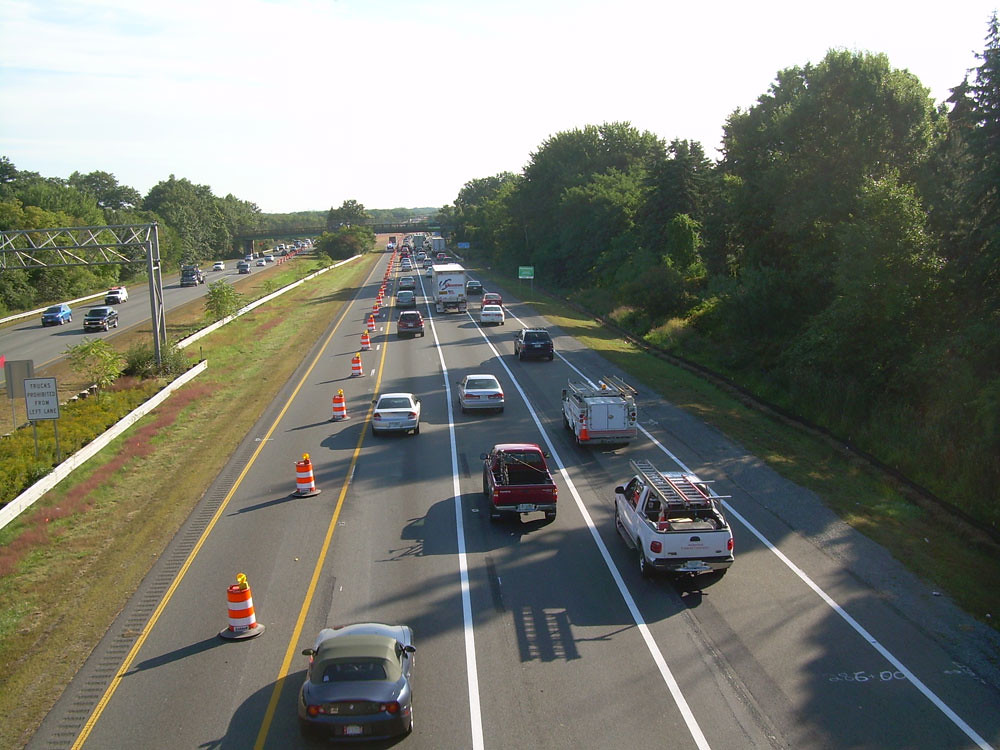
3. **Improper Lane Changes**
Improper lane changes are another frequent reason that grabs the attention of police officers on the roads. These maneuvers are often considered dangerous driving practices, as they can shorten other drivers’ reaction times and frequently lead to accidents. Whether it’s cutting another vehicle off, switching lanes without adequately looking, or failing to use your turn signal, these actions are easily spotted from a distance and without any special equipment by law enforcement personnel.
One of the most common improper lane changes involves drivers who switch lanes without signaling their intentions. This lack of communication can catch other drivers off guard, creating dangerous situations. If an officer observes you changing lanes without signaling, it can be a quick trigger for a traffic stop, leading to a visit from the traffic cop and potentially a citation. Even if it’s not always serious enough to warrant a stop on its own, it certainly contributes to an officer’s probable cause when combined with other observations.
Beyond signaling, police also look for behaviors like cutting another vehicle off or generally unsafe lane changes. These actions indicate a disregard for other motorists and can quickly escalate into hazardous conditions on busy roadways. Moreover, specific rules, such as only using the left lane for passing and not for just cruising along, are also observed by police. Violating this can also catch the attention of officers, as it impedes the flow of traffic and can be a source of frustration and potential road rage for other drivers.
To avoid being pulled over for improper lane changes, always use your turn signals consistently and well in advance of your maneuver. Ensure there is ample space before you change lanes and always check your blind spots. Drive defensively and predictably, allowing other drivers to anticipate your movements. These habits not only prevent tickets but significantly enhance road safety for everyone, reducing the risk of accidents caused by sudden or unannounced lane changes.
Read more about: The Unseen Drivers: Deconstructing Unlicensed Driving Laws, Viral Myths, and the Future of Road Safety

4. **Cell Phone Use**
In an increasingly connected world, cell phone use while driving has become a pervasive issue and a major reason for traffic stops. Many states, including Minnesota a couple of years ago, have enacted laws making it illegal for drivers to use a cell phone while operating a vehicle unless a hands-free mode is activated. This legislative shift reflects a growing recognition of the profound dangers associated with distracted driving, which cell phone use epitomizes.
Police officers are specifically on the lookout for drivers engaging in manual cell phone use. If an officer observes you holding a phone to your ear for a call, picking it up to send a text message, or even using it for emailing or GPS navigation without hands-free activation, you should expect a traffic stop and a citation. These actions are highly visible and are directly linked to a significant increase in accident risk, making them a high priority for law enforcement to curb.
The consequences of distracted driving, often stemming from cell phone use, are well-documented. Common indicators that grab police attention include swerving within a lane, making erratic lane changes, or a general lack of focus on the road. These behaviors are often direct results of a driver’s attention being diverted to their device rather than their surroundings, underscoring why such violations are taken seriously by police officers nationwide, regardless of specific state laws.
To prevent a stop for cell phone use, the advice is clear: put your phone away while driving. If you must use your phone, ensure it is in hands-free mode for calls and that any navigation apps are set up before you begin your journey. Better yet, avoid using your phone altogether. Laws may vary from state to state, but the principle remains consistent: distracted driving, especially due to cell phone use, is never a good idea and significantly increases your risk of an accident and a police encounter.
Read more about: The $15.8 Million Presidential Custom Fleet: A Deep Dive into High-Security Transportation and Campaign Operations
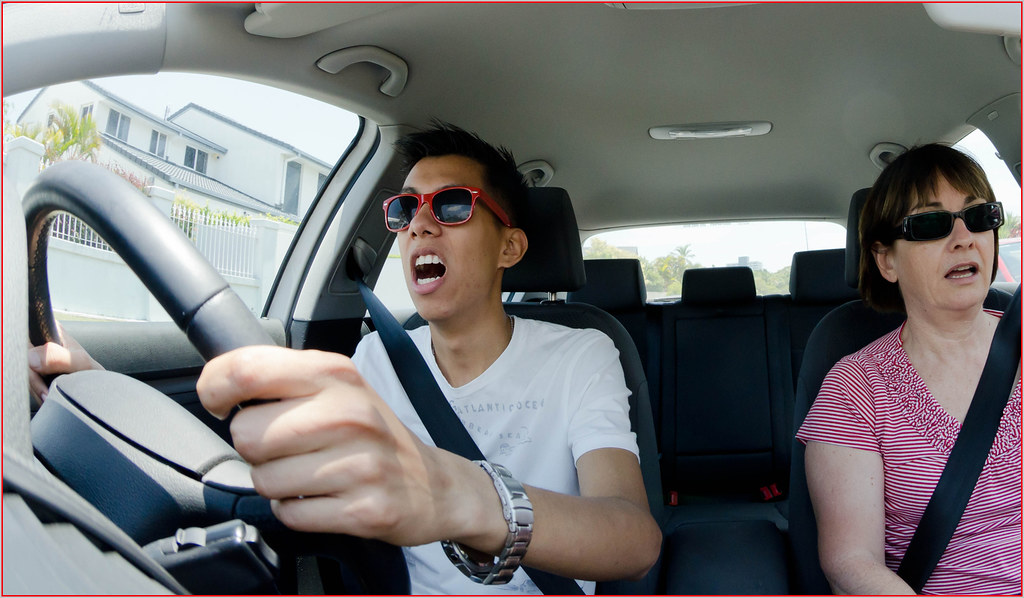
5. **Failing To Wear A Seat Belt**
Another straightforward reason police officers will conduct a traffic stop is for a seat belt violation. This particular infraction is classified as a primary violation in many jurisdictions, meaning that an officer doesn’t need to witness any other infraction or have another reason to pull you over to initiate a stop. The mere sight of a driver or passenger not wearing a seat belt is sufficient probable cause for law enforcement to intervene.
While a ticket for failing to wear a seat belt may not always be the most costly fine you can receive, it’s an easily avoidable one. The primary purpose of seat belt laws is safety. Seat belts are proven to be the most effective safety devices in vehicles, drastically reducing the risk of severe injury or fatality in the event of a crash. Officers enforcing these laws are not just issuing tickets; they are actively promoting a critical safety measure that protects occupants.
It’s important to note that a seat belt stop, while perhaps seeming minor, can sometimes lead to the discovery of other violations. During the course of a routine stop, an officer may observe other issues, such as an expired license, an unregistered vehicle, or even signs of impairment, which can lead to additional and more serious citations. This underscores why it’s always best to be compliant with all traffic laws, even those that seem less significant on their own.
To avoid being pulled over for a seat belt violation, simply buckle up every time you get into a vehicle. Ensure all your passengers, especially those in the back seat, are also properly restrained. This simple act takes mere seconds but provides vital protection and completely eliminates a common reason for police intervention. It’s a habit that safeguards your life and keeps you on the right side of the law, making your journey safer and less prone to unexpected stops.
Read more about: Seriously Where Did They Go? 15 Automotive Features That Vanished (Or Should) From Our Dashboards
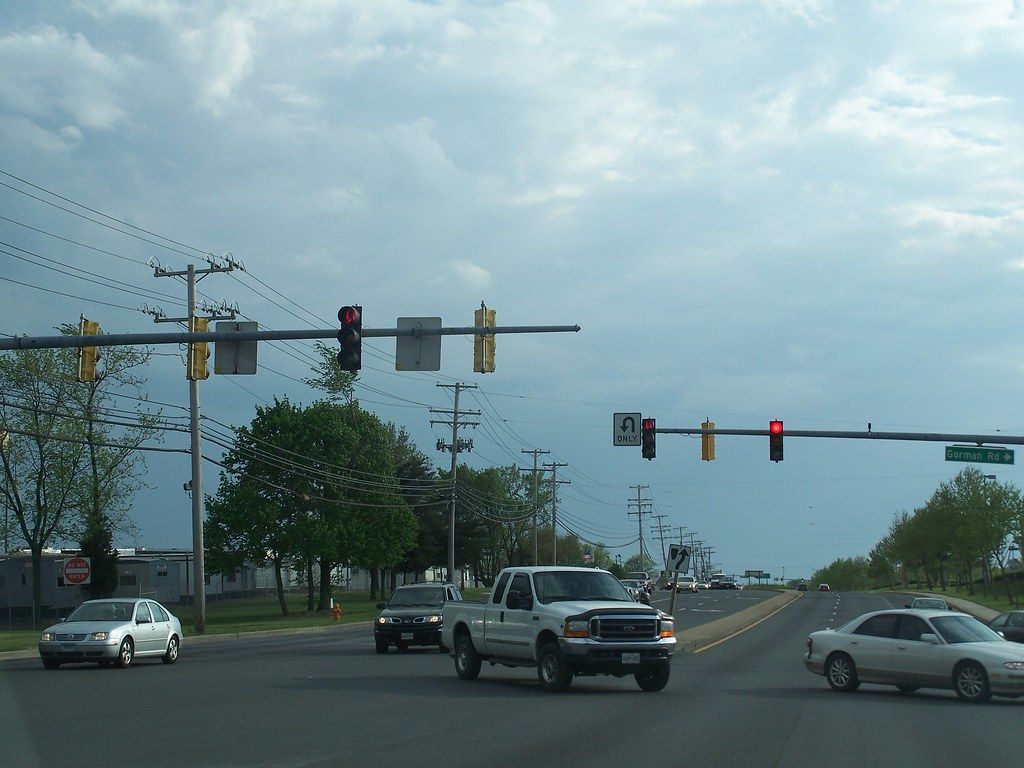
6. **Performing an Illegal U-Turn**
We’ve all been there: you miss your turn, your GPS starts barking instructions for a “legal U-turn,” and the temptation to quickly flip around can be strong. However, performing an illegal U-turn is a common reason that police officers will pull you over. Not every intersection or road segment is an invitation to execute a quick direction change, and many locations are clearly marked with signs prohibiting U-turns, making such a maneuver a definite violation.
The legality of U-turns often depends on specific signage and local ordinances. In many areas, U-turns are restricted at certain intersections, on curves, or near hilltops where visibility is limited, as these situations significantly increase the risk of an accident. If an officer observes you making a U-turn where it is explicitly prohibited, they have a clear and justifiable reason to initiate a traffic stop and issue a citation.
The dangers associated with illegal U-turns are considerable. They can abruptly interrupt the flow of traffic, catching other drivers off guard and potentially leading to collisions. Moreover, if you cause a crash while completing an illegal U-turn, you are almost certainly going to be deemed the at-fault driver, facing not only legal penalties but also significant insurance implications. The quick change in direction and sudden obstruction of traffic makes them incredibly hazardous maneuvers.
To prevent being pulled over for an illegal U-turn, always pay close attention to road signage. If a U-turn is prohibited, or if you are unsure, it is always safer to proceed to the next intersection and make three right turns (or left turns, depending on the side of the road you drive on) to change direction. Taking a slightly longer but legal route is a small price to pay to avoid a traffic stop, a ticket, and the significant risk of an accident, ensuring a smoother and safer journey.
7. **Tailgating**
While not always directly linked to speeding, driving too closely to another vehicle, commonly known as “tailgating,” is a notably dangerous practice that frequently grabs the attention of police officers. It is often classified as a “jerk move,” and more importantly, it is both illegal and incredibly dangerous. This aggressive driving behavior significantly shortens other drivers’ reaction times and frequently leads to preventable accidents.
The inherent danger of tailgating stems from the drastically reduced stopping distance available to the following driver. Consider, for instance, a large vehicle like a RAM 1500, which might require approximately 135 feet to come to a complete stop from 60 mph. If such a vehicle is tailgating a smaller, lighter car with a superior stopping distance, the probability of a devastating rear-end collision during an unexpected panic stop becomes alarmingly high. This substantial disparity in braking capabilities, even before accounting for human reaction time, creates extremely hazardous conditions.
To mitigate the risk of being pulled over for this serious infraction, maintaining a safe following distance is paramount. A commonly endorsed and practical standard for days of good weather, when visibility is clear and roads are dry, is the “three-second rule.” This method involves selecting a stationary object along the roadside and ensuring that a minimum of three seconds elapses from the moment the vehicle directly in front of you passes that point until your own vehicle reaches it.
Furthermore, responsible driving necessitates allowing an even greater following distance when encountering challenging road conditions. This includes driving in rain, snow, fog, or during nighttime hours, all of which compromise visibility and braking efficiency. By diligently adhering to these defensive driving principles, you not only dramatically reduce the likelihood of contributing to an accident but also remove a clear, easily observable justification for a police officer to initiate a traffic stop, fostering a safer driving environment for everyone.
Read more about: Master Your Commute: 12 Life-Changing Strategies to Slash Stress and Boost Your Well-being Every Day
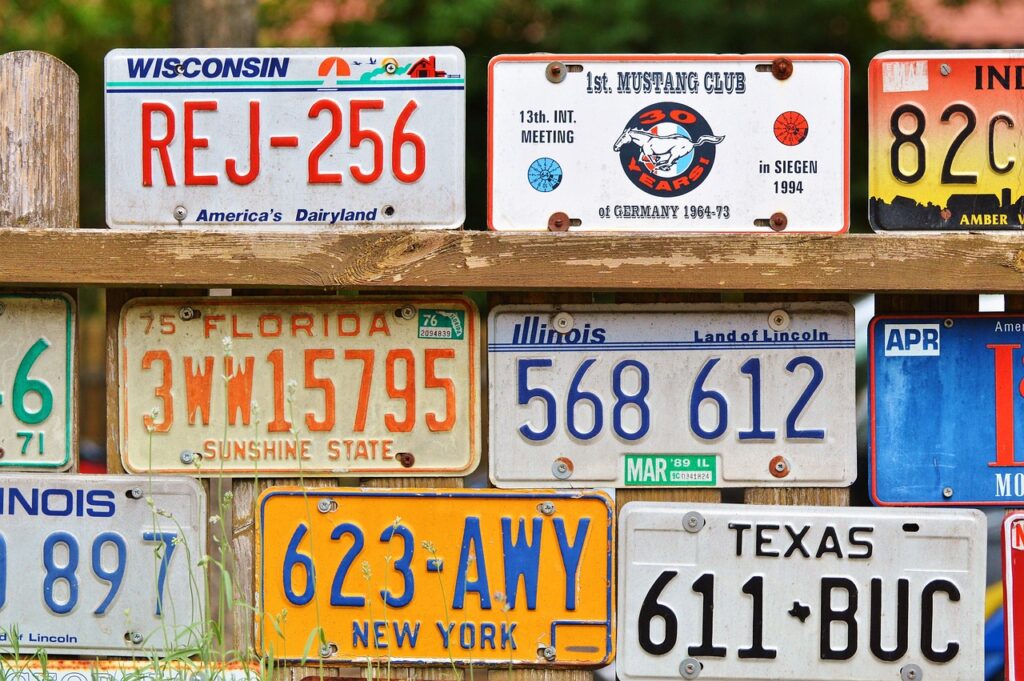
8. **Expired or Suspended Registration/License Plates**
Driving a vehicle with expired tags or a suspended registration is another common, and easily verifiable, reason for a police traffic stop. Unlike some violations that require active observation of driving behavior, an officer can often spot an expired license plate from a distance. This clear visual cue provides immediate probable cause for intervention, frequently leading to a stop.
This issue falls squarely under vehicle maintenance lapses, a category often overlooked by drivers until it’s too late. The legal requirement for current vehicle registration ensures that a vehicle meets certain operational standards and that the driver is authorized to operate it on public roads. An expired registration or suspended status indicates a failure to comply with these fundamental legal requirements, which are in place to ensure all vehicles on the road are properly documented and maintained for safety.
The consequences of driving with expired tags can extend beyond a simple ticket. During the course of a routine stop, an officer will almost certainly check your other pertinent documentation. If additional issues are discovered, such as an unrenewed driver’s license, outdated insurance, or other regulatory oversights, these can lead to supplementary and often more significant citations. This potential cascade of penalties underscores the importance of staying current with all vehicle-related paperwork.
To avoid a stop for this reason, establishing a routine for regularly checking the expiration dates on your license plates and registration documents is highly advisable. While many states diligently send renewal notices, the ultimate legal responsibility rests with the driver to ensure all vehicle-related paperwork is current and valid. Timely renewal not only ensures compliance with the law but also shields you from the significant inconvenience, potential fines, and other administrative penalties that frequently accompany a traffic stop for a preventable administrative oversight.
Beyond the immediate risk of a ticket, the enforcement of registration and license plate laws serves a crucial public safety function. These regulations help ensure that vehicles on the road are properly identified, have met fundamental safety standards, and are appropriately insured. An expired or suspended status can signal a lapse in these important responsibilities, prompting law enforcement to intervene not just for revenue generation, but to maintain order and accountability within the driving populace.

9. **Erratic Driving / Suspicion of Impairment**
When a police officer observes erratic driving behavior, it immediately raises significant concerns about a driver’s potential impairment due to drugs or alcohol. Such conduct constitutes a major non-speeding justification for a traffic stop because it directly suggests a lack of proper vehicle control or focused attention, posing a severe hazard to everyone on the road. Police officers are specifically trained to identify these telltale signs that may indicate a driver’s faculties are compromised.
Common indicators that readily grab police attention include noticeable swerving within a lane, executing erratic or inexplicable lane changes without apparent reason, or exhibiting a general lack of focused engagement with the road. These behaviors, while not inherently illegal in themselves until confirmed, are frequently direct results of a driver’s attention being diverted or their cognitive faculties being impaired. They serve as “subtle cues” that provide the necessary objective basis for a stop under the reasonable suspicion standard.
In a real-life scenario, if an officer observes a vehicle weaving slightly or consistently drifting across lane lines, particularly during late-night hours, it can unequivocally trigger a traffic stop. The officer’s primary intention in such a situation would be to investigate further, often by checking for signs of sobriety, rather than immediately issuing a ticket for a minor traffic violation. Even if no formal violation has been committed *yet*, the observable driving pattern furnishes the requisite “specific and articulable facts” for a lawful intervention.
To prevent being pulled over for suspicion of impairment, always ensure you are absolutely fit to drive. It is imperative to never operate a vehicle under the influence of alcohol, illicit drugs, or even certain prescription medications that impair driving ability. Even minor fatigue can lead to erratic driving patterns. Maintaining complete focus on the road, consistently staying within your designated lane, and driving predictably are all crucial defensive measures.
The serious nature of impaired driving is clearly reflected in the stringent laws and severe penalties associated with it across the nation. Even if an officer initially stops you based on “low-threshold suspicion” of erratic driving, the subsequent investigation can swiftly lead to field sobriety tests and, if impairment is confirmed, a DUI/DWI arrest. These severe consequences typically encompass significant fines, immediate license suspension, mandatory education programs, and even incarceration, emphatically underscoring why law enforcement takes “driving conduct indicating impairment” with such gravity.
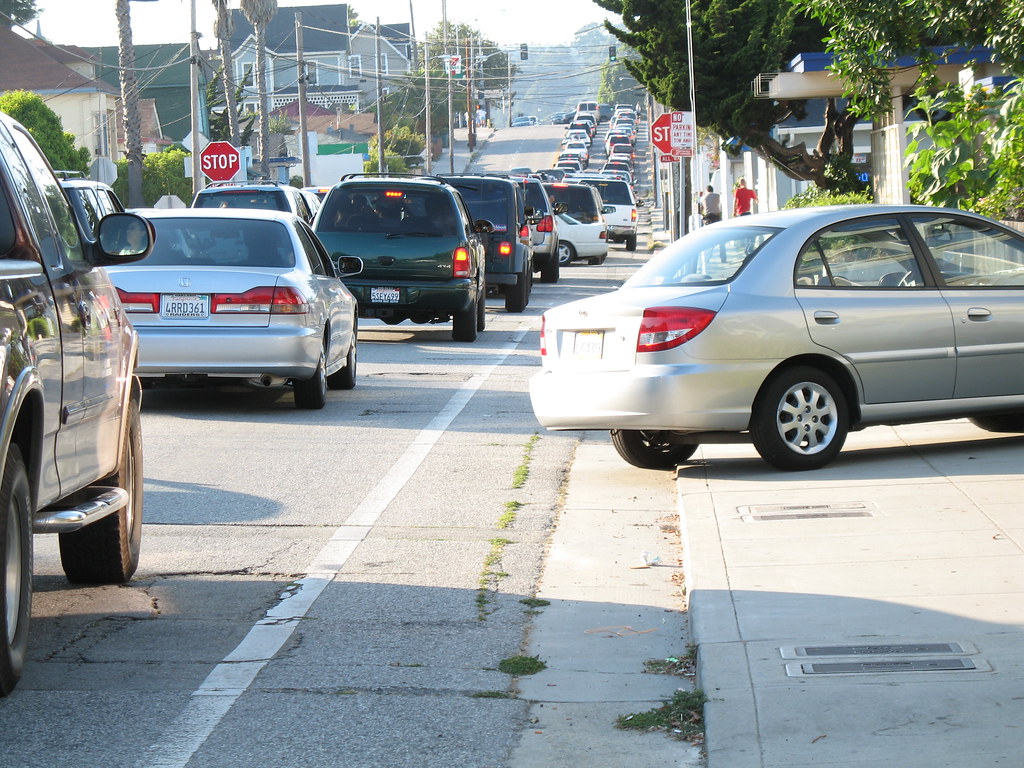
10. **Matching a Description / Suspicion of Criminal Activity**
Beyond routine traffic violations, police officers possess the authority to pull over a vehicle if they harbor reasonable suspicion of criminal activity. This frequently occurs when a vehicle, its license plate, or its occupants closely match the description of those implicated in a recent crime, or when other credible intelligence suggests a direct connection to unlawful acts. This type of stop transcends mere traffic enforcement, evolving into a critical investigative measure.
For instance, if law enforcement receives a detailed report of a robbery involving a specific make, model, and color of a car, and an officer subsequently spots a vehicle precisely matching that description, they are provided with a clear and justifiable reason for a traffic stop. The fundamental purpose of such a stop is to verify the identity of the vehicle’s occupants and to thoroughly investigate their potential involvement in the reported criminal activity, or to rule them out as suspects.
The legal basis for these stops is rooted deeply in the “reasonable suspicion” standard, as established by *Terry v. Ohio*. This threshold, while considered low, mandates that officers possess “specific and articulable facts” to support their suspicion, moving beyond mere hunches. The context highlights that such stops are utilized in 55% of investigative stops, according to DOJ data, signifying their critical role in broader crime prevention efforts. Given the urgency of preventing criminal acts, approximately 70% of these suspicion-based stops are upheld in court, underscoring their robust legal foundation.
If you find yourself in a situation where your vehicle or description inadvertently matches one related to a crime, it’s crucial to cooperate calmly and respectfully with the officers. Provide your identification as requested, but clearly and politely state if you do not consent to any searches beyond what is legally required. While it can undoubtedly be an unsettling and anxiety-inducing experience, resolving the identity check quickly and calmly is the best course of action, allowing you to proceed once you are definitively cleared of suspicion.
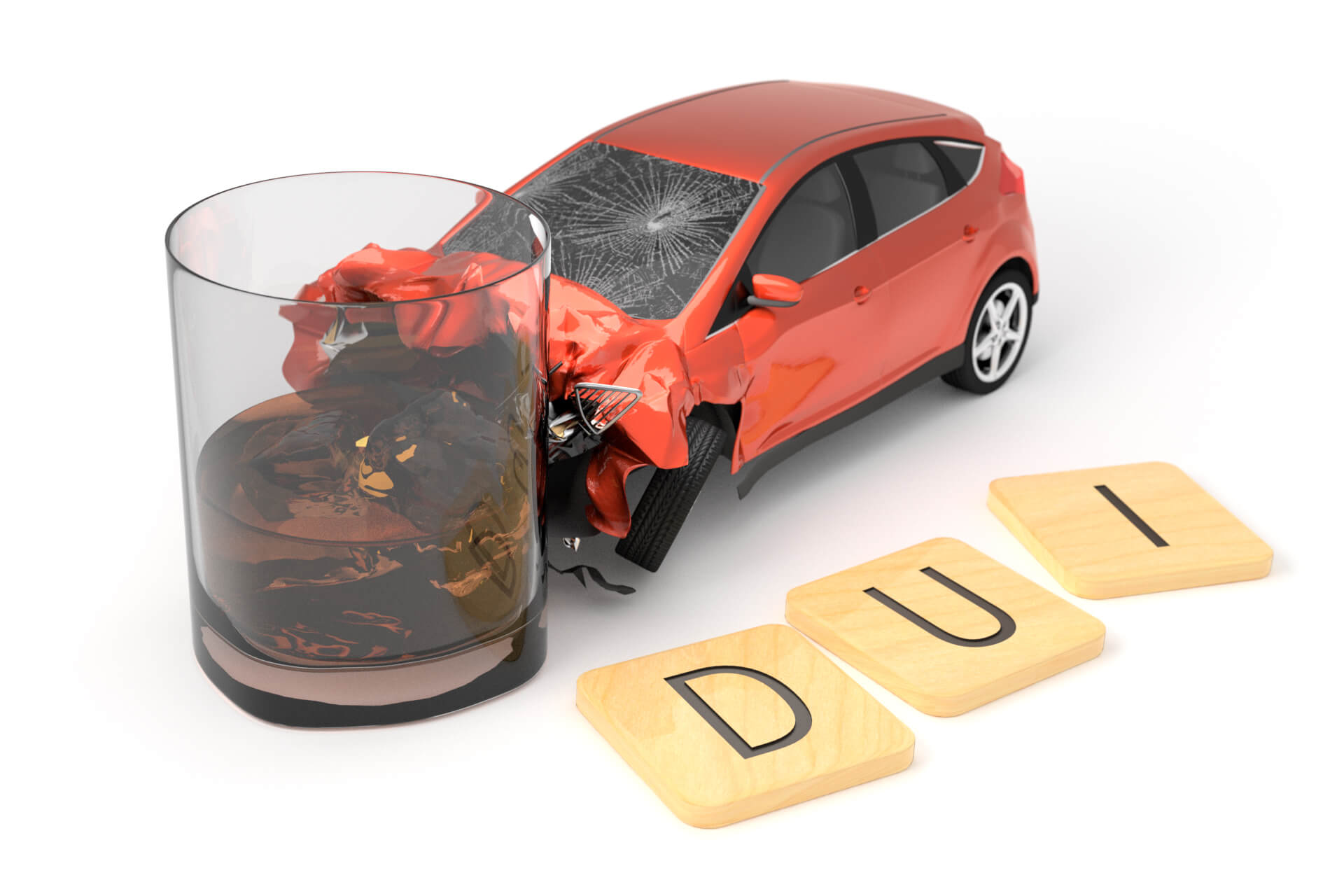
11. **Checkpoints (DUI or License Checks)**
A distinct category of traffic stops, and an important legal exception to the general requirement of individual suspicion, involves checkpoints, such as those strategically set up for DUI or license verification. Unlike traditional traffic stops, these operations do not necessitate individual reasonable suspicion that a particular driver has committed a violation. Instead, all vehicles passing through a designated area are stopped systematically, or at least according to a neutral, predetermined formula.
The constitutionality and legality of these checkpoints were firmly affirmed by the Supreme Court in landmark cases such as *Michigan Dept. of State Police v. Sitz* (1990), which specifically addressed the permissibility of sobriety checkpoints. These operations are generally deemed permissible because the compelling public interest in highway safety, particularly in preventing impaired driving, is considered to outweigh the minimal and brief intrusion on individual motorists. They represent a proactive law enforcement strategy designed to deter violations before they occur.
During a checkpoint, officers will typically engage in a brief interaction with each driver, performing quick checks for visible signs of impairment, valid driver’s licenses, and current vehicle registration. While drivers are stopped without prior individual suspicion of wrongdoing, the scope and duration of the stop are generally limited strictly to these specific checks. The context indicates that this approach applies in 40% of checkpoint stops, according to NHTSA data, and an impressive 85% of such stops are upheld in court, underscoring their established legal standing.
To navigate a checkpoint encounter smoothly and efficiently, ensure that your driver’s license, vehicle registration, and proof of insurance are all readily accessible within your vehicle. It is advisable to follow all instructions given by the officers, and to maintain a calm and courteous demeanor throughout the interaction. While you do possess fundamental rights, such as the right to remain silent beyond identifying yourself, cooperation within legal bounds typically helps expedite the process and avoid any unnecessary complications. Being prepared with your documents and a calm attitude is key to a hassle-free experience.
It is important to recognize that checkpoints, while an exception to the rule of individual suspicion, are not arbitrary exercises of power. Their implementation is frequently strategically planned to occur at specific times and locations known for higher incidences of impaired driving or unlicensed vehicle operation, thereby maximizing their impact on overall public safety. These periodic and visible operations serve as a powerful deterrent, consistently reminding all drivers of the constant vigilance of law enforcement and the paramount importance of responsible driving and strict compliance with all licensing and registration laws.
12. **Community Caretaking Exception**
The “community caretaking exception” to the Fourth Amendment provides a distinct legal basis for police officers to pull over drivers, not necessarily for a direct traffic violation or suspicion of criminal activity, but rather out of a genuine and reasonable concern for public safety or the immediate welfare of an individual. This exception formally recognizes that police agencies have a broader, multifaceted role in society beyond strict law enforcement, often acting as crucial first responders to situations where assistance or intervention is clearly needed.
This specific justification for a traffic stop was initially established by the Supreme Court in *Cady v. Dombrowski* (1973) and encompasses various scenarios where officers observe a vehicle or its driver in a potentially hazardous or distressed situation. For instance, if an officer notices your car with its hazard lights continuously flashing, a visibly flat tire that poses a road hazard, or observes a driver who appears to be in obvious medical distress, they may legitimately initiate a stop to check on your well-being or to alert you to a potential danger you might not be aware of. The context notes that this applies in 45% of welfare stops, reflecting its common application.
The primary and overriding intent of a community caretaking stop is fundamentally to provide assistance or prevent imminent harm, rather than to issue a punitive citation. An officer might, for example, pull you over simply to inform you of a significant mechanical issue with your vehicle that you were unaware of, such as a dangerously dangling exhaust pipe, or to ensure that you are not in urgent need of medical attention. While they might still ask for your license and registration during such an interaction, the initial and primary “reason” for the stop is purely one of welfare and assistance.
If pulled over under the community caretaking exception, it’s important to understand the officer’s underlying concern. Express your gratitude for their vigilance and promptly address the issue they raised, whether it’s a vehicle problem or a welfare check. This type of stop vividly highlights the proactive and protective role law enforcement plays in maintaining safety and order on the roads, making it a “police stop requirement for care” that often results in helpful intervention and support rather than strictly punitive action.
While providing a broad justification for stops, the community caretaking doctrine is not boundless or without its limitations. It must always be applied reasonably, with the officer’s actions demonstrably linked to a genuine, objective concern for safety or well-being, rather than being utilized as a covert pretext for conducting an unrelated search. This exception distinctly underscores the police officer’s crucial role as a public servant, often extending well beyond direct enforcement duties to actively ensure the welfare and safety of citizens on the road.
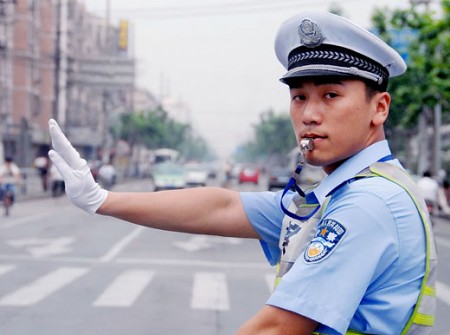
13. **Pretextual Stops**
Perhaps one of the more nuanced and certainly controversial reasons for a traffic stop, pretextual stops occur when a police officer utilizes a minor, objectively observable traffic violation as a legal “pretext” to stop a vehicle and subsequently investigate other, unrelated suspicions. These suspicions might range from drug activity to other forms of criminal behavior. While the officer’s true underlying motive might be to look for something far more serious, the stop remains legally permissible as long as there is an objective, legitimate traffic violation that can be cited.
The Supreme Court’s pivotal decision in *Whren v. United States* (1996) firmly solidified the legality of pretextual stops. This influential ruling unequivocally states that an officer’s subjective intentions or internal motives are irrelevant if an objective legal basis for the stop, such as a minor traffic infraction like expired tags or a broken taillight, genuinely exists. Even if the officer harbors ulterior motives, the initial stop remains constitutionally valid, focusing strictly on the objective violation.
Despite their firm legal standing, pretextual stops are not without significant controversy and criticism. Critics vocally argue that this practice can inadvertently lead to discriminatory policing, as they are often perceived to disproportionately affect certain racial or economic groups. Data strongly suggests that people of color are more frequently subjected to such stops and subsequent searches. The context notes that this allowance for pretextual stops occurs in 60% of all traffic stops, according to DOJ data, and approximately 70% of these pretextual stops are consistently upheld in legal reviews, highlighting the ongoing tensions between legal permissibility and legitimate community concerns regarding fairness and equity.
Understanding the dynamics of pretextual stops is profoundly crucial for all drivers. While directly challenging an officer’s underlying, unstated motive during a stop is legally complex and often difficult, you can and should challenge the objective validity of the initial traffic violation they cite. During such a stop, it is paramount to remember your constitutional rights: provide required documents as requested, but politely and clearly state if you choose to remain silent on other matters, and unequivocally communicate that you do not consent to any searches of your vehicle unless probable cause or a valid warrant is presented. This critical knowledge empowers you to navigate these inherently complex and potentially sensitive encounters more effectively and protect your civil liberties.
Navigating the roads confidently requires more than just avoiding speeding tickets; it demands a comprehensive understanding of the myriad reasons an officer might initiate a traffic stop. From meticulously maintaining your vehicle’s equipment and registration to practicing vigilant and predictable driving habits, and even recognizing the intricate legal nuances of checkpoints or pretextual stops, being informed is undoubtedly your strongest defense. Each interaction with law enforcement, when handled with awareness and respect, is an opportunity to exercise your rights and ensure your safety. By embracing this knowledge, you transform the inherent uncertainty and potential anxiety of flashing lights into a moment of informed interaction, safeguarding your journey and actively promoting responsible road citizenship for all.

